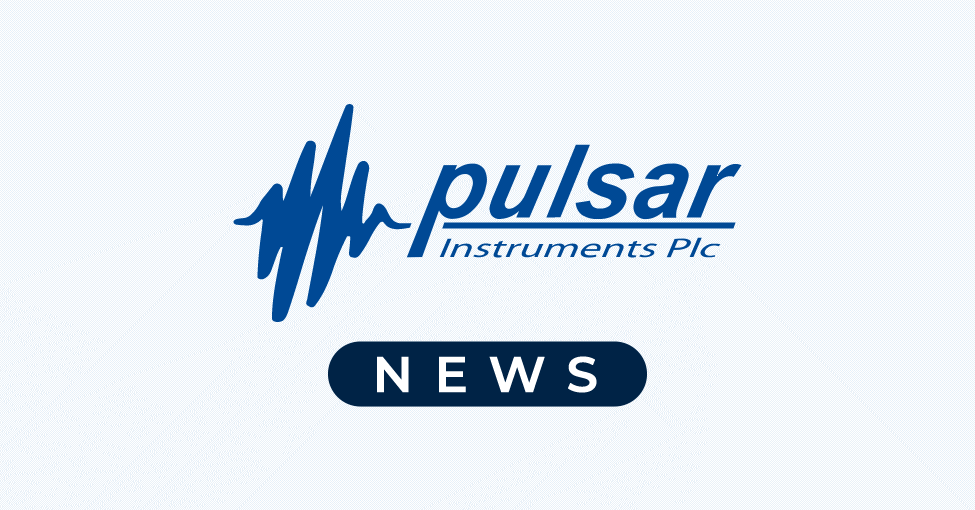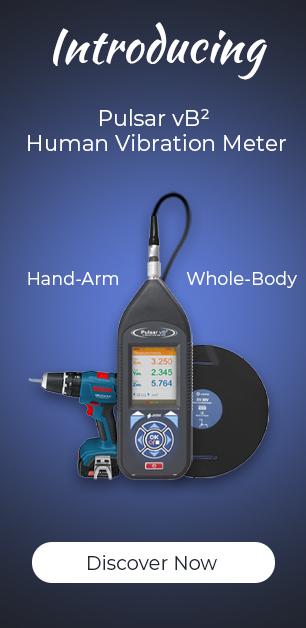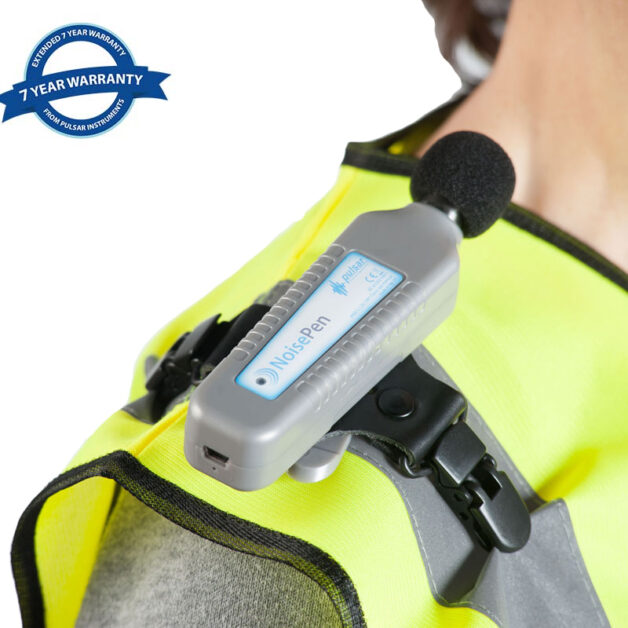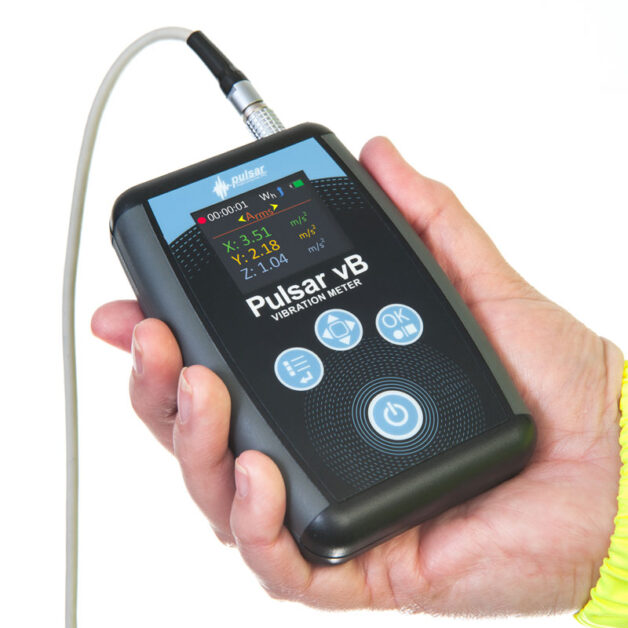Find out when to use a dB meter or when you should use noise dosemeters instead
Under the Noise at Work Regulations (2005), employers must protect their workers from Noise-Induced Hearing Loss (NIHL) and other conditions associated with exposure to excessive noise. Measuring and controlling noise at work is a challenge in most companies who ‘make or do something noisy’. It is especially challenging in manufacturing, engineering or construction environments where roles, locations and shift patterns often change. Both dB meters and noise dosemeters have a role to play in doing this, but which one should you choose and when?
To assess whether companies have a noise problem, the person responsible for health and safety in these companies will normally check noise levels by making observations and taking straight forward noise measurements using a dB meter in areas where they suspect there might be a problem, e.g. around noisy machines, or taking a measurement generally in a factory area. The results, although giving a valuable indication of the noise level and potential noise hazards, do not show the true noise exposure of people working in these environments. In these circumstances where workers are exposed to variable amounts of noise on their shifts it can be difficult to identify which areas, processes or machinery are potentially harmful to a worker’s hearing.
Integrating Averaging Sound Level Meters
Using a dB meter, health and safety practitioners can undertake a more detailed series of individual noise measurements to determine the typical exposures of people at risk.
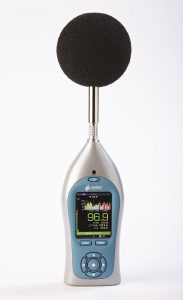
Ideally, your dB meter should be at least a Class 2 Integrating Averaging Sound Level Meter compliant to IEC 61672-1:2003. It should measure the ‘A’ weighted average noise level (correctly written as LAeq), the peak ‘C’ weighted noise level (CPeak) and C-A for calculating the correct levels of hearing protection required (e.g. by using the HML method). Something like the Pulsar Nova Model 44 Noise at Work Meter will be ideal for this.
To work out an individual’s noise exposure, the LAeq must be taken for each ‘task’ undertaken by an employee and then, using either any software provided (for instance with the Pulsar Nova) or the HSE exposure calculator spreadsheet, these must be added together to determine the individual’s overall exposure over their shift.
The limitations of this method of calculating noise exposure come when the employee meets these conditions:
- does many different tasks throughout the day
- works on several sites across their shift (e.g. maintenance workers)
- works in difficult to access areas (e.g. forklift trucks, minors or those in confined spaces)
- is on the move all the time (emergency vehicles for instance)
- works remotely
- has unpredictable shift patterns.
Then imagine you have several employees who meet these conditions; it becomes a very time-consuming and uneconomical task.
Discover the full range of Pulsar’s sound level meters.
Personal noise dosemeters
If a handheld meter is not the right option for you (either for the practical reasons outlined above or for safety reasons), a noise dosemeter might be the best option.
What are noise dosemeters?
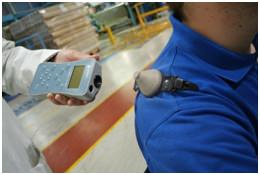
Noise dosemeters are self-contained, wearable personal sound exposure meters (PSEM). Dosemeters are usually worn on the shoulder of the person being monitored (as close to the ear as possible) and measure the noise levels people are exposed to throughout their working day. In some cases, they can also be mounted onto safety helmets. The better dosemeters on the market are lightweight, compact and cable-free (wireless) which means they won’t snag on anything or interfere with the worker’s tasks, and they are usually so small workers will not even know they are wearing them.
Like sound meters, noise dosemeters measure the ‘A’ weighted average noise level, but the difference is that noise dosemeters typically measure both the overall LAeq and LCPeak values (over an entire shift – 8 hours) as well as calculating the daily ‘A’ weighted noise exposure value in terms of LAEP,d or LEX,8h. One of the most useful features that a noise dosemeter can provide is a display of the noise level over an 8 hours day (or shift). This is particularly useful for workers who meet the conditions above.
Pulsar offers two different dosemeters:
1. Noise dosemeter system: This wearable device is easy to use; simply start your measurements at the beginning of a shift, then stop and download them at the end, and then use Pulsar’s FREE software, AnalyzerPlus, to create quick and compliant noise exposure reports.
Personal noise dosimetry at its best:
- Lightweight and cable-free
- Measure noise levels in any location
- Robust and tamper-proof
- Rechargeable
- Measures LAeq and CPeak values
- Calculates daily exposure values (LAep,d or LEX,8h)
Designed to be used in many industries such as manufacturing, construction, chemical, mining and highway maintenance for example. It’s a small, rugged, lightweight, and cable-free. There are no displays on the dosemeter itself so there is no ability for people to tamper with it. It can be worn on the shoulder or mounted on a safety helmet, making it the ideal solution for capturing the reality of the wearers’ daily noise exposure levels. It is designed to run for an entire shift; logging up to 33 measurements in a 24 hour period.
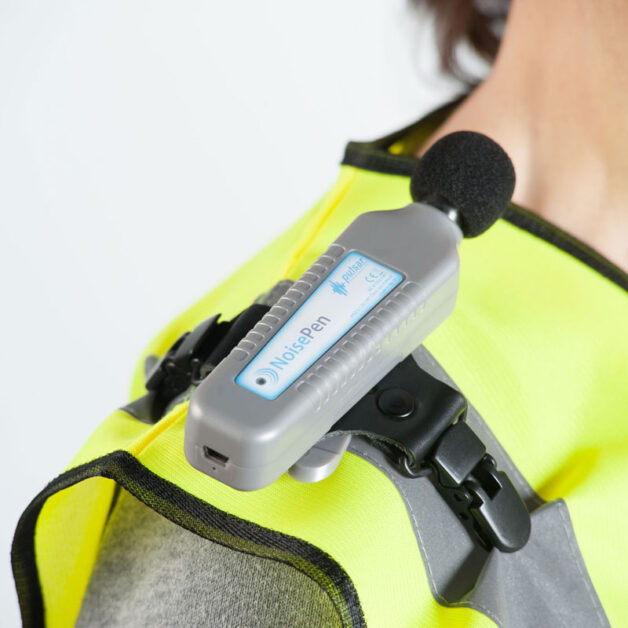
2. NoisePen dosemeter: This is a similar concept to the dosemeter system, but thanks to technological development there is no need to start, stop and download measurements from the NoisePen each day or even use a separate Reader Unit. Instead, it takes measurements at regular intervals over 30 hours to give a time history of the person’s noise exposure over time; this can be over a few hours, a day or a week until the Health and Safety Manager is satisfied that a realistic picture of typical exposure has been obtained, then it is just connected to a PC and the measurements are downloaded.
All Pulsar noise dosemeters such as the NoisePen can be programmed for full compliance with the Control of Noise at Work Regulations, Industrial Hygiene Standards and Occupational Noise Exposure Guidelines, making it a highly effective tool as part of any hearing safety programmes to monitor workers’ mid to long term personal noise exposure.
Benefits of portable noise dosemeters
Sound meters definitely have their place in noise at work assessments as they show if there is a noise problem in the first place. Specifically, they allow you to evaluate which areas of the workplace may present a noise hazard and identify which employees could be at risk of noise-induced hearing loss and therefore who’s noise exposure you will need to calculate.
Employing someone to stand on the factory floor all day to take personal noise measurements can be costly, disruptive and, physically, not always possible. With a portable noise dosemeter, the manager can simply set and decide the time he wants to measure and what needs measuring and then attach the dosemeter on the worker. The device is then left to do its work for the rest of the shift and is retrieved at the end of the shift (or prescribed measurement time) to analyse the results.
Whereas measurements made using a dB Meter would typically be short term LAeq and LCPeak values which would then be used to calculate a daily or weekly exposure value in terms of an LAEP,d or LEX,8h, a major advantage of using a noise dosemeter is that if they are worn for the whole working shift, then the noise dose will have been measured in full and no further calculations will be required.
If your workforce tends to move around a lot or their tasks or locations vary often, a dosemeter will give a more realistic indication of their exposure than would a static sound level meter. This makes it ideal for industries such as manufacturing, construction, utilities, entertainment, leisure, transport, agriculture and emergency services, to name but a few.
Because it gives a clear picture of patterns in exposure, a noise dosemeter will enable you to select appropriate ear protection for any particular task where the legal noise limit might otherwise be exceeded.
Find out more about conducting a noise survey or download our FREE Guide: 5 Steps to Controlling Workplace Noise.
You might also like:
Our blogs
